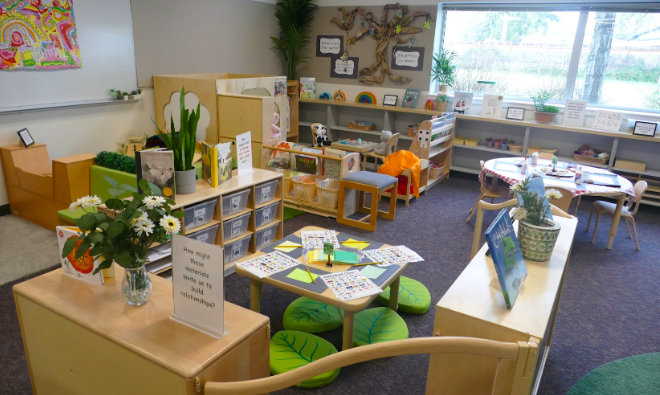
We’ve curated a collection of images from various classroom environment spaces to inspire and provoke your thinking. We have found that environments that support playful inquiry tend to be spaces that are living, breathing, and dynamic. Teachers of playful inquiry thoughtfully design and re-design classroom environments to meet the context and dreams of the teachers, children, and families who spend time in those spaces. Although we’ve organized these galleries by common areas of classroom environments that we’ve encountered, there is not any requirement that these are the areas that must be present. Many classrooms we work in do not have all of these areas. Rather than consider each area, you might consider questions such as:
-What spaces encourage and invite children to use their imagination?
-Is there space for tinkering, math, construction, and engineering?
-Is there space for creating, mark making, drawing, and writing?
-Where can children get their sensory needs met?
-Where are children invited and encouraged to solve problems?
One of the most important things to consider in designing environments that support playful inquiry is whether children have access to the spaces and materials in their learning environments. You might ask yourself, where do you see evidence that children know they have permission to access the materials and spaces in their learning environment throughout the day?
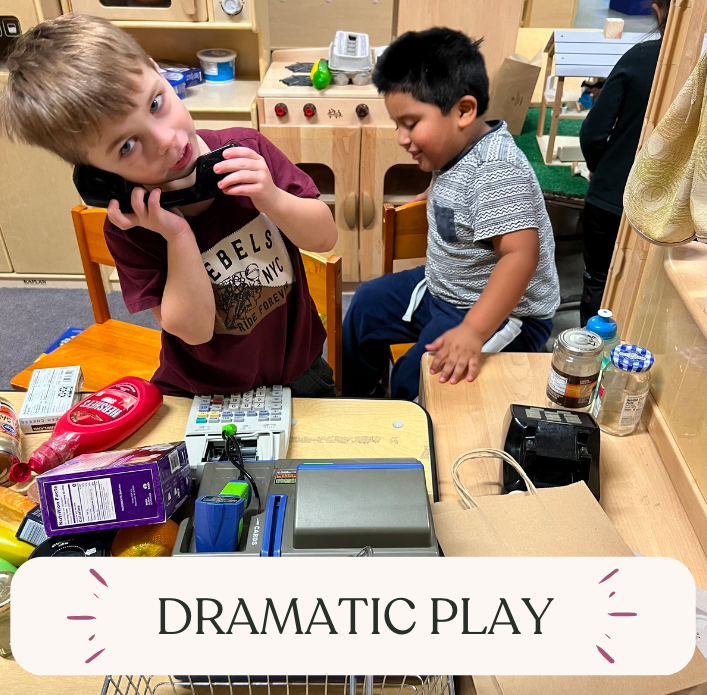
Dramatic Play
How do you encourage children to incorporate their own ideas and interests into the dramatic play themes throughout the year?
We walk alongside teachers as they listen to children to create space for dramatic play in public school classrooms. The children in these classrooms take on roles and act them out as a way of exploring who they are and their surroundings. During the year, the ideas may changes or evolve based on the children’s interests and ideas.
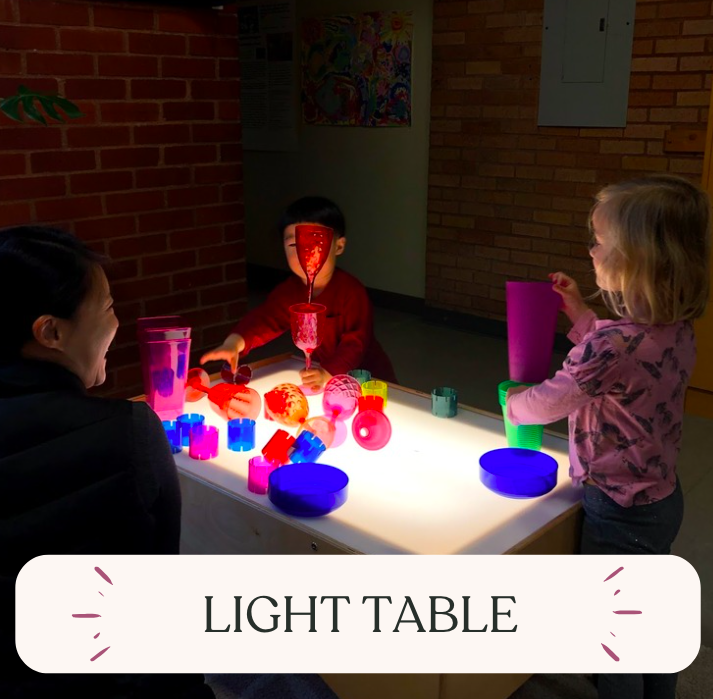
Light and Shadow
What are some creative ways you have used a light table?
A light table is a dynamic tactile tool that offers children many opportunities to explore light, shadow, color, shape, pattern, and design. It has the potential to expand children’s thinking and learning through the unique ability of light to captivate children’s focus and draw out new ideas. The light table engages sensory explorations and creations that support oral storytelling and language acquisition.
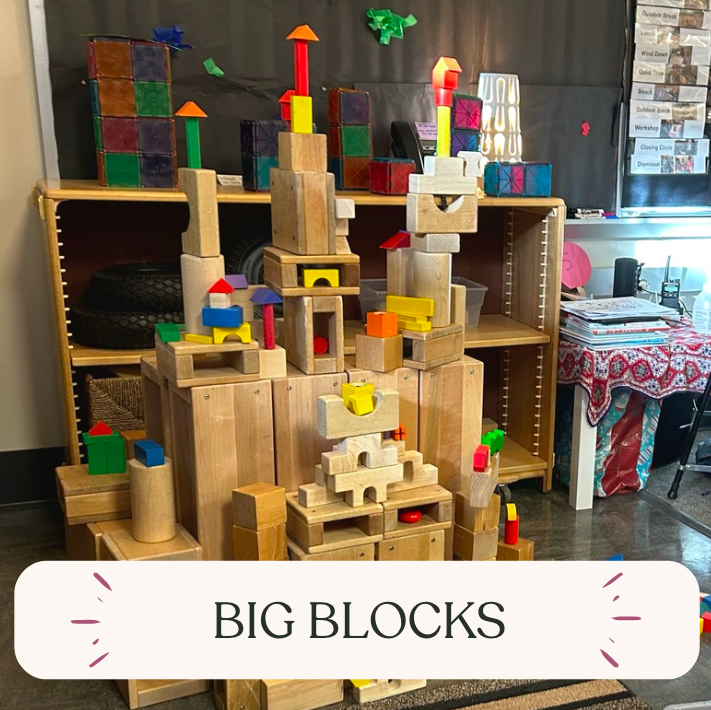
Big Blocks
How do you encourage imaginative play and collaboration in the block area of your classroom?
Block construction offers children the freedom to test out their strategic thinking, take apart, and put back together any block-based creation they can imagine. The block area in a classroom can be filled with wooden blocks of different shapes and sizes as well as small vehicles, toy animals, flowers, and loose parts.
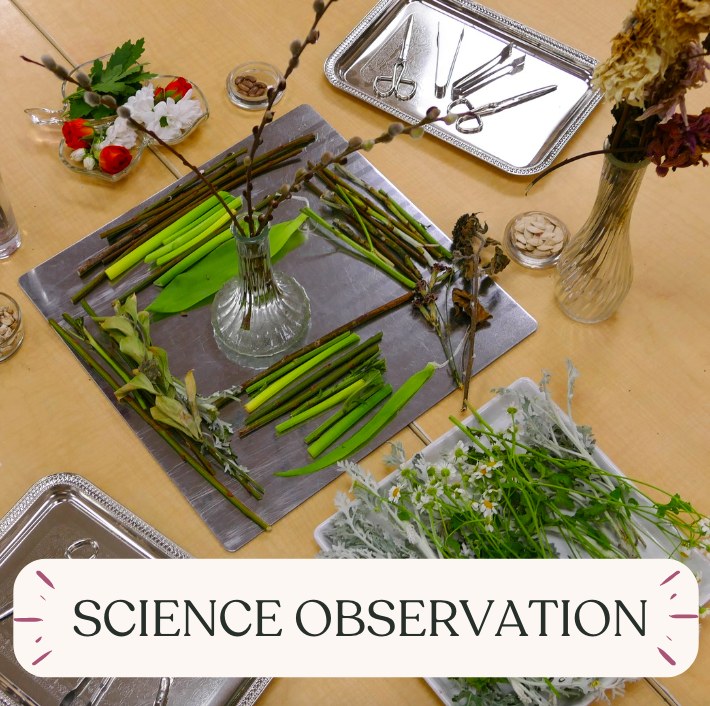
Science Observation
Do you have a science observation table in your classroom? If so, how has it benefitted the children’s learning and exploration?
A nature or science observation table is an exploration space for children and adults to bring into the classroom things they find in nature such as seeds, flowers, leaves, shells, fruits, vegetables, insects, nests and more. It enables children to touch, look closely, smell, and listen to some of the objects in the natural environment. Tweezers, magnifying glasses, and other tools are available to invite exploration. Drawing paper and art supplies are also present to encourage children to look closely, wonder and record their observations.
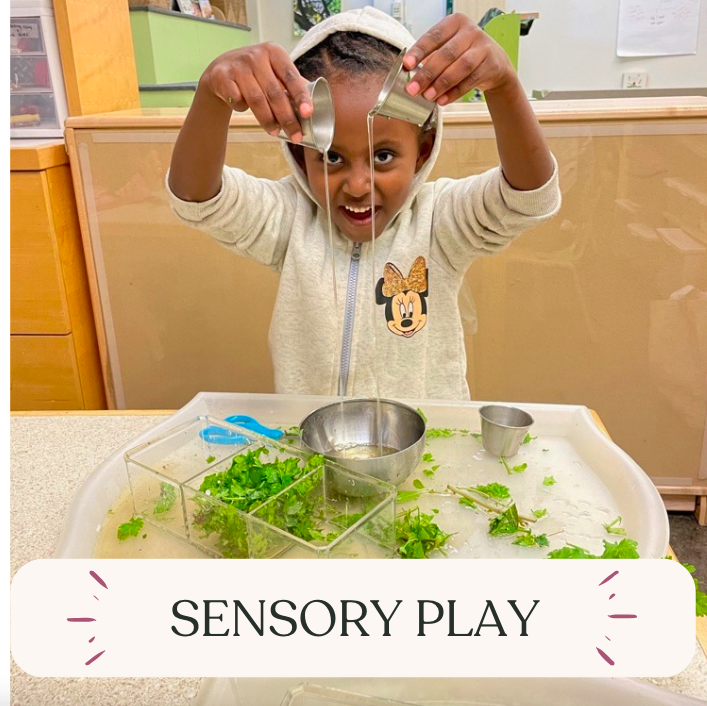
Sensory Play
What are some of your favorite sensory activities?
Sensory play is any activity that stimulates a child’s senses: touch, smell, taste, movement, balance, sight, and hearing. Sensory play facilitates exploration and naturally encourages children to use scientific processes while they create, investigate, and explore. Popular sensory activities involve the use of water, kinetic sand, playdough, as well as tools for picking, scooping, modeling, and transferring. Combined with toy animals, toy people, or loose parts, sensory play is a wonderful way to inspire story telling, writing as well as to help all children self regulate.
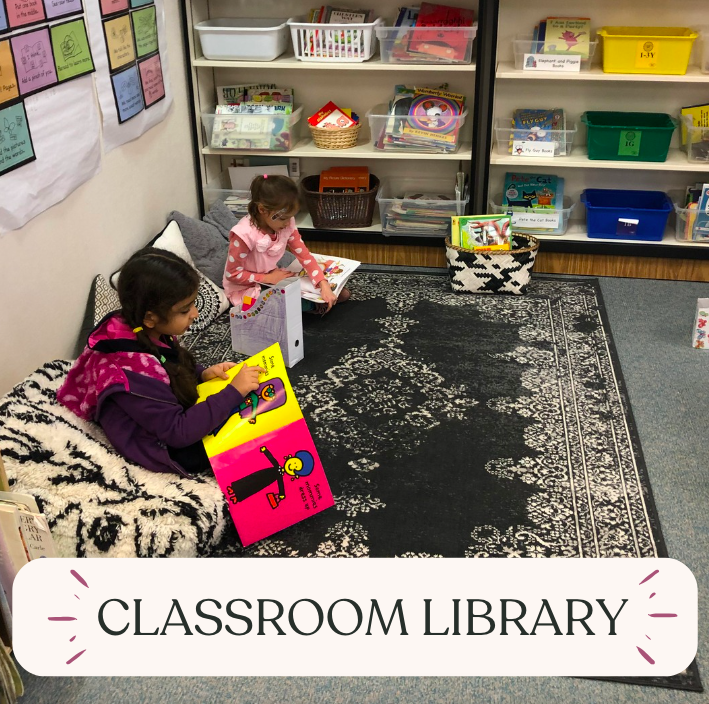
Classroom Library
What are a few of your favorite books waiting for children in your classroom library?
Children learn to love books when stories are read to them, and when they have access to books they want to read. Most of the teachers we work with read aloud every day. Looking for new books that are engaging and match students’ interests and experiences? We love to share great picture books we see in the classrooms we visit! We get so much joy from watching the teachers we work with use facial expressions and incorporate movement and voice variations to add excitement to the story. They engage the children’s metacognitive processes by asking them questions and the story and inviting them to make connections to their own lives.
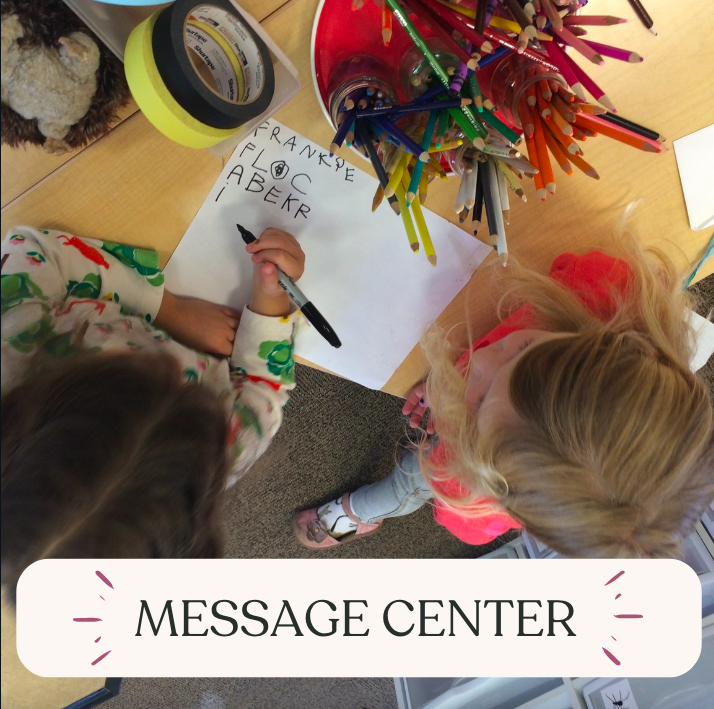
Message Center
How have you see children’s writing evolve as they build community and make new friends?
Children want to communicate with the people they love through mark-making, writing, book-making, and drawing. The children usually start by creating messages for their family members, but as they build community and get to know each other, messages for their new friends and teachers start to appear. As the children become interested in writing their names or alphabet letters, this space supports early literacy and extends into list making, story and nonfiction writing.
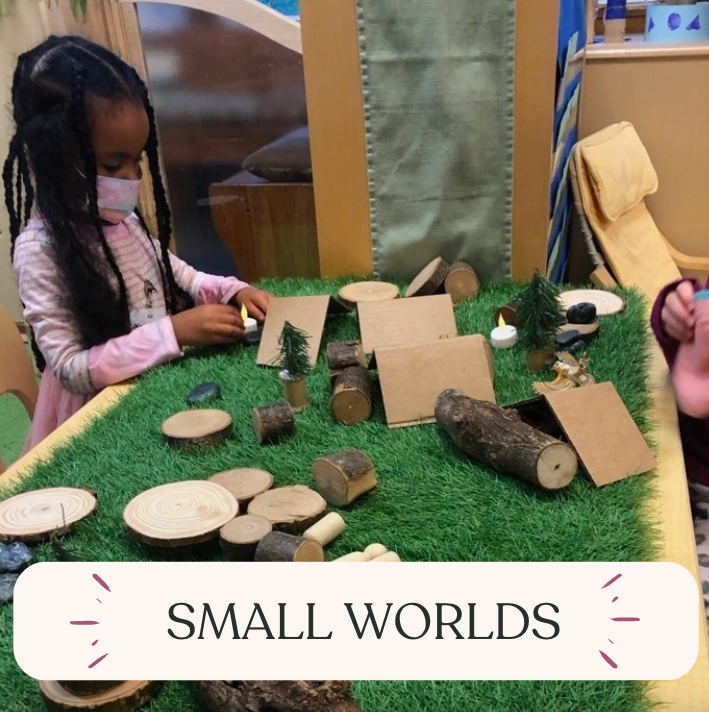
Small World
How have you seen small worlds used in an educational setting?
Small worlds are miniature play set ups that allow children to create and explore different environments and scenarios. These can include tiny landscapes with toy figures, vehicle, buildings, and other props to encourage imaginative play and storytelling. Small worlds can represent familiar places like farms, cities, or construction sites, as well as fantastical settings like outer space or underwater worlds. They provide opportunities for children to develop creativity, language skills, and social interaction while engaging in hands on, open ended play.
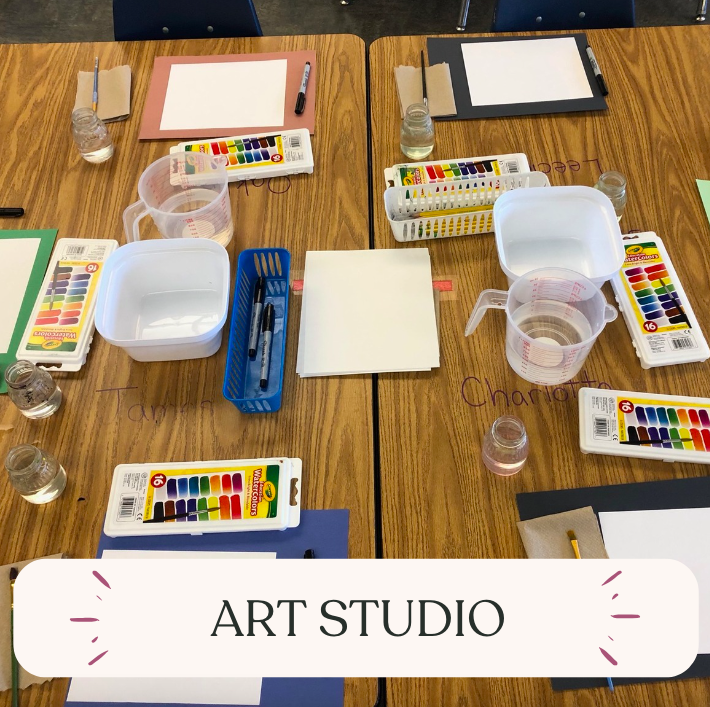
Art Studio
How do you encourage children to express their ideas, feelings, and stories through the materials provided in the art studio (art table, creation station…) throughout the school year?
Early in the school year, we support teachers with brainstorming ways to provide children with open-ended, explorative art experiences to ensure that they have familiarity with the basic process and materials of the art studio. Later in the school year, we support teachers to stretch those possibilities as they use materials of the arts and sciences together as thinking tools to communicate ideas, feelings, solve problems, and create stories.

Loose Parts
What loose parts might we gather with our students and families?
Introducing a wide variety of materials called “loose parts” into children’s learning environments honors the natural learning strategies of children. These open ended materials highlight what children are already good at! Loose parts become thinking tools that offer visibility into the mind of the child and the ways they are communicating who they are, what they think, and wonder.
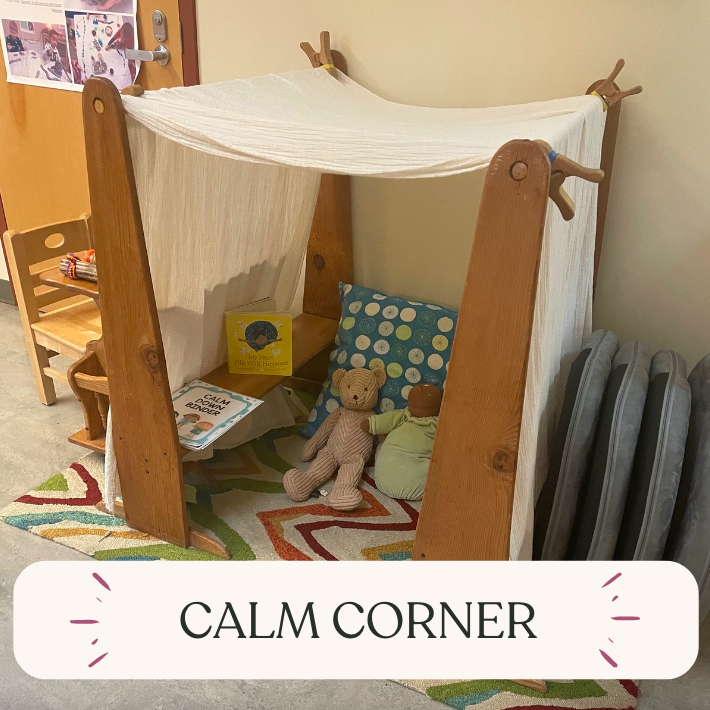
Calm Corner
Where do students go in your classroom when they need to reset?
A calm corner is an area in a classroom with the intent of being a centering space for a child to go when they need to take a break, have time alone, and self-regulate. Think about what children will do there? What tools or images, textures and supports help them to re-enter the community when they are ready?